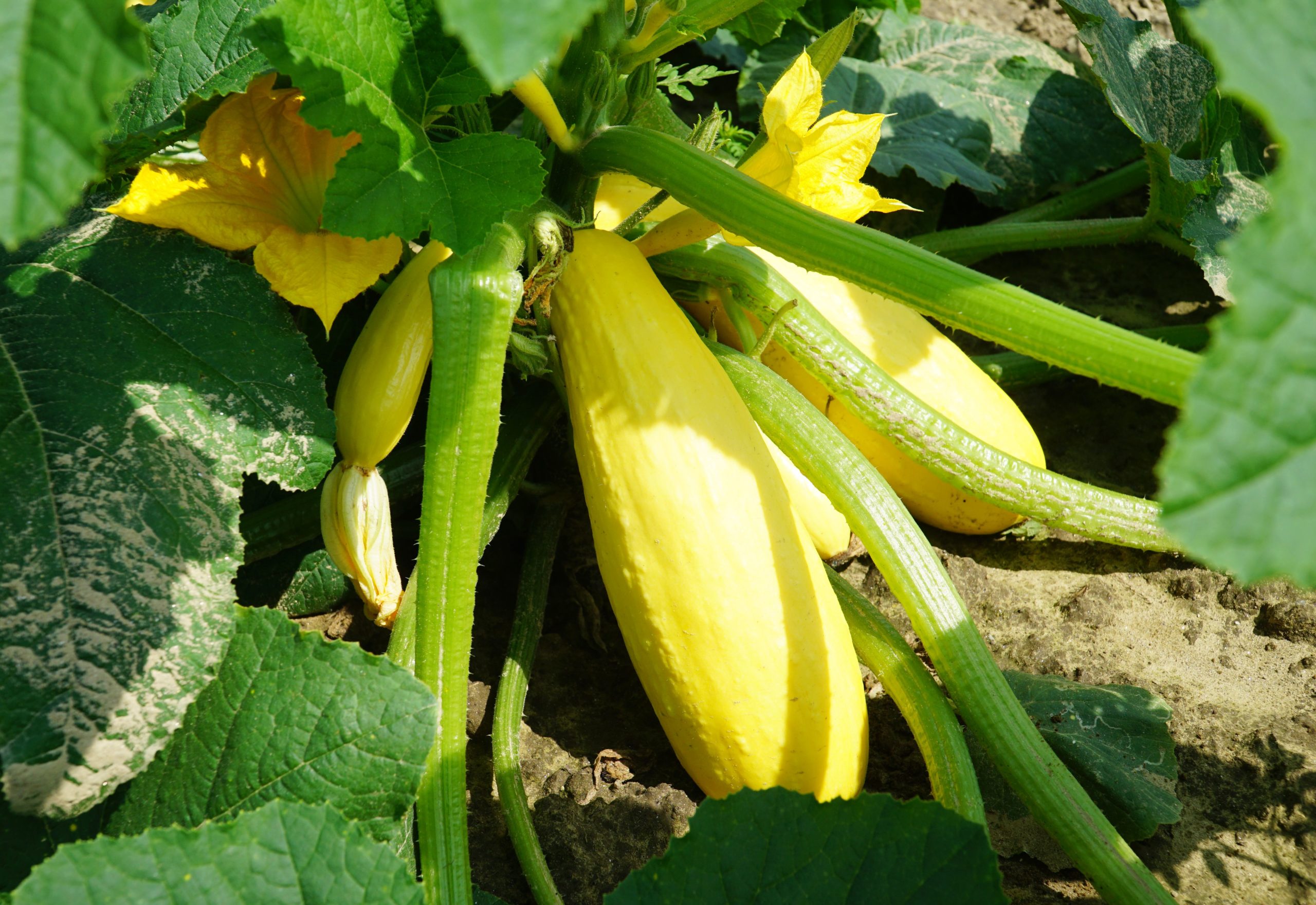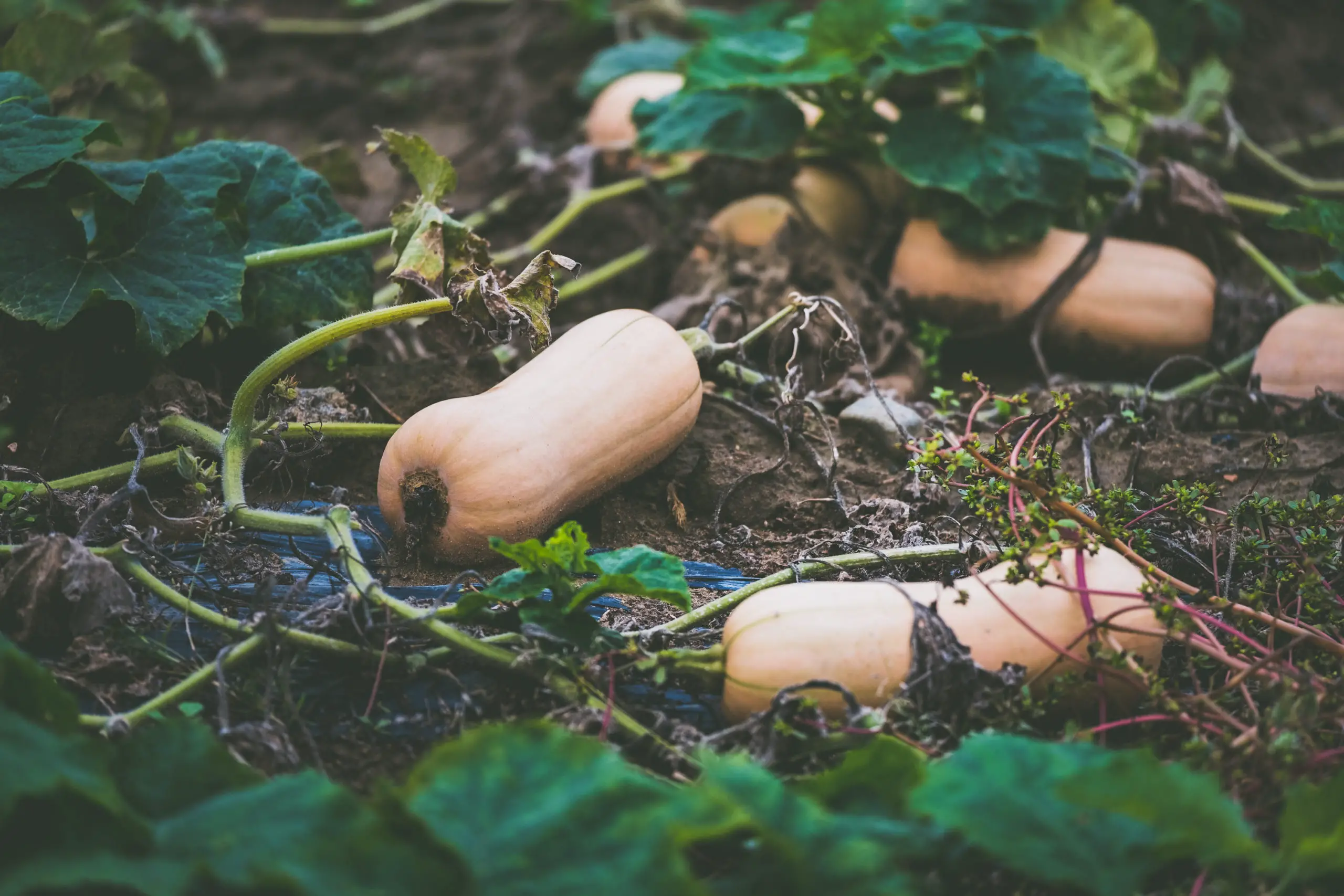Your squash plants were looking beautiful. They were lush, green, and healthy. One day, you notice yellow squash leaves in your garden.
• Do you know what causes the leaves of your squash to turn yellow?
• How do you fix the problem?

Six reasons and fixes for Yellow Squash Leaves are:
1. Incorrect Watering – fix watering;
2. Iron Deficient – add iron chelates;
3. Vine Borers Attack – remove them;
4. Pest Infestation – remove infected leaves & spray with chemicals;
5. Virus Infection – saturation spray;
6. Root Rot Infections – remove all squash plants & plants most hardy plants.
Squash are cucurbit plants. Squash plants produce green foliage with brightly colored vegetables ranging from whites and yellows to greys and greens.
Squash is usually categorized as summer and winter squash. Winter squash is harvested in the summer and stored to be consumed in the winter.
Remember: As most plants produce green foliage, we’re talking about why the foliage turns yellow – not the plant.
Reasons and Fixes for Yellow Squash Leaves
Reason # 1 Incorrect Watering
Your squash plant may be lacking in water making its leaves turn yellow.
Squash plants are hardy plants; thus, they need about 2 inches of water a week. Your squash plant will need more water when planted in areas with high temperatures.
If the leaves of your squash plants are turning yellow, you may be watering them too little or too much. Your squash plants need to be hydrated; thus, the soil needs to be moist (8-12 inches down).
Conversely, your squash plants may also be overwatered. The ground surrounding your squash plant should not be soggy. It should only be moist and not saturated.
Water-clogged squash plants mean you are overwatering. It can also mean your soil is blocked or compacted and not draining properly.
How to Fix:
Your squash plants not getting the right amount of water a week? if you live in an area where summers are dry and hot, you will need to water your squash plants every day with a drip hose or sprinkler.
Reason # 2: Iron Deficiency
Your squash plants need iron, so it will be easy to make chlorophyll and make the leaves green. Overwatered plants are prone to iron deficiency because nutrients are leached out of the oil.
How to Fix: Adding some iron chelates, a fertilizer, to the soil can help. Avoid overwatering your squash plants.
Reason # 3. Vine Borers Attack
Vine borers can attack a squash plant and hit the vine of the plant. Yellow squash leaves are a tell-tale sign of a vine borer attack on your squash plant. Vine borers gradually attack from the base end to the tip of the vine.
How to Fix: Pesticides will not work on vine borers. The only effective way to deal with vine borers is to remove the vine borer from the stem.
You will need to get to the spot where you think the vine borer sits and carefully place a slit on the vine toward the direction of the capillaries. With a toothpick, pierce the vine borer and kill it.
Slitting the vine where you suspect the vine borers are will hurt the vine borer and the squash plant. You should not worry about hurting the squash plant because if you do not remove the vine borer, the plant will be doomed anyway.
Reason # 4. Pests Infestation
Insects such as squash bugs and whiteflies can settle on the undersides of the leaves causing them (the leaves) to turn yellow.
As squash bugs feed on the squash leaves, small, yellowish specks or bite marks are left. After they are done feeding on the leaves, the yellow specks die and the plant decays and turns brown.
Whiteflies biting the leaves of the squash plant also cause its leaves to turn yellow. Whiteflies also leave behind sticky honeydew after feeding. Areas of the leaves that turn yellow will wilt, decay, turn brown, and die.
How to Fix: Remove the infected leaves that have turned yellow and bring in some beneficial insects to your garden. You can also spray fungicidal chemicals on the squash plant.
Reason # 5. Virus Infection
Squash plants are susceptible to a lot of viruses such as polyviruses and squash mosaic viruses. These viruses get to the squash plant by feeding insects (beetles, aphids, and whiteflies).
As the insects are feeding, the virus is passed on to the vascular system of the squash plant and throughout the plant.
A virus-infected squash plant will lose its vigor. Its leaves will also turn yellow and it will have a distorted and mottled appearance.
How to Fix: immediately treat virus infestation on the squash plants to reduce the chances of re-occurrences. Treat the squash plant with a fungicidal spray.
Spray the chemical across the squash plant until it is almost saturated.
Saturate the undersides of the squash leaves, too. You have to make sure you get to the hiding pests. Reapply the spray after seven days if the virus still exists.
Reason # 6. Root Rot Infections
Root rot infections will also make squash leaves wilted and yellow. Root rot infections are often caused by overwatering.
Soil-borne infections such as fusarium wilt, verticillium wilt, and phytophthora root rot are often already present in the soil before you planted the squash plant.
These rotting infections get into the squash plant through its root system, causing the collapse of its vascular system. The failure prevents water and vital nutrients from getting to the rest of the plant.
How to Fix: Unfortunately, no chemical treatment can successfully remove fungal rot infections. The infectious spores will remain in the soil for many years after you remove the plants.
To treat root rot infections, remove the squash plants and throw them. Avoid replanting squash plants in the area. You can instead plant other vegetation that can withstand root rot infections.
You can save squash plants infected with root rot if they still have firm roots. You can replant them in new and fresh soil.
Final Thoughts
It seems to be rather like a mystery that needs to be solved.
Yellow squash leaves will appear if the squash plant is stressed due to any of the reasons mentioned above. Determine what is stressing your squash plant so you can remedy the situation and help its leaves become green again.
We’ve already established that if your plants’ leaves turn yellow, you think first of watering and then the other complaints.
The reason for this is that most plant owners battle, at first, with getting the watering situation right. It seems to be the first stumbling block when growing any plants.
Too much or too little water can kill the poor plants, and the balance must be learned before blaming it on anything else.
Once you get balance with your watering, you can start looking at roots, pests, deficiencies, and viruses and asking other questions to solve the mystery and find the culprit.
All of this is part and parcel of the happy gardeners’ sleuthing kit: it’s not so much ‘who dunnit?’ and why? but more ‘what dunnit?’ and how? !!
Jenny Marie
Tribal Writer
Edited By
Patricia Godwin

